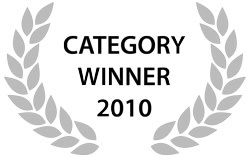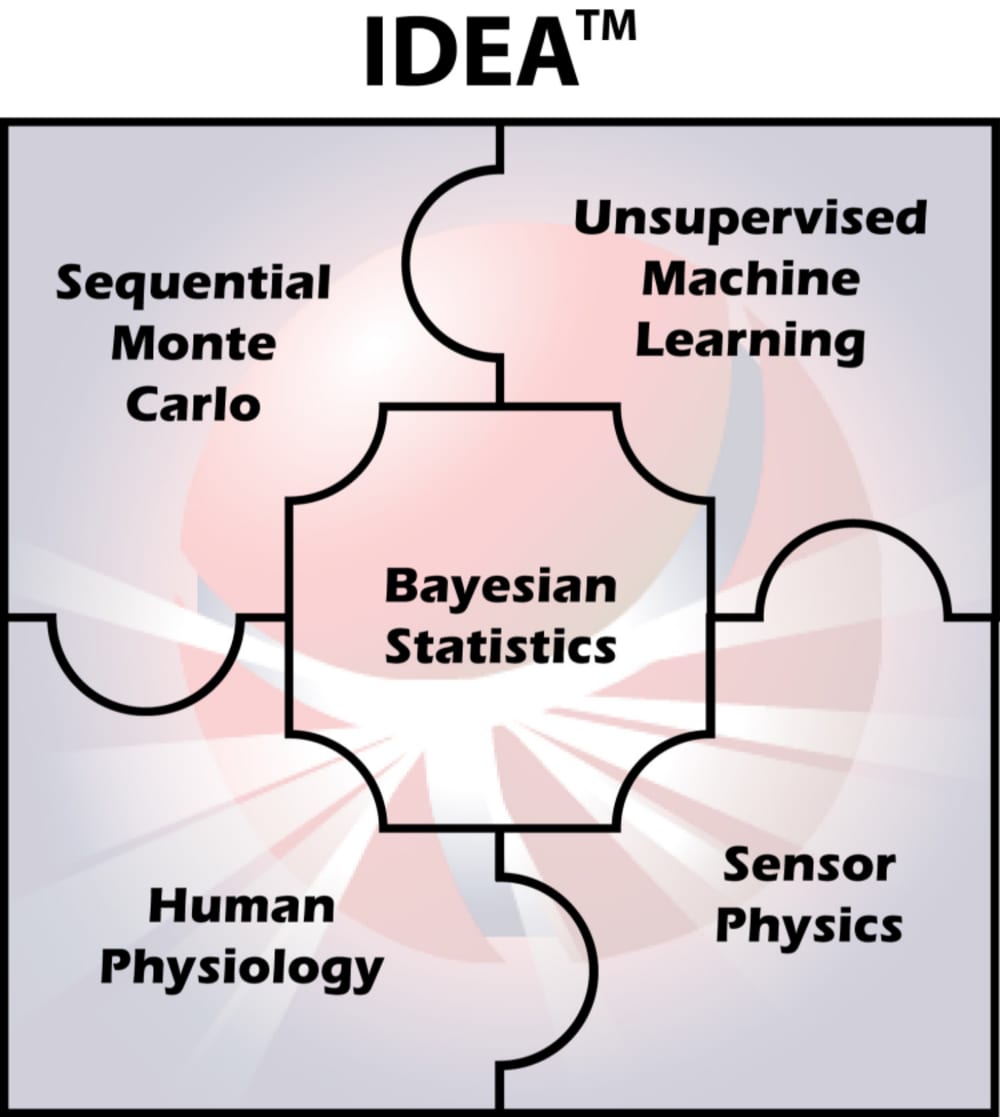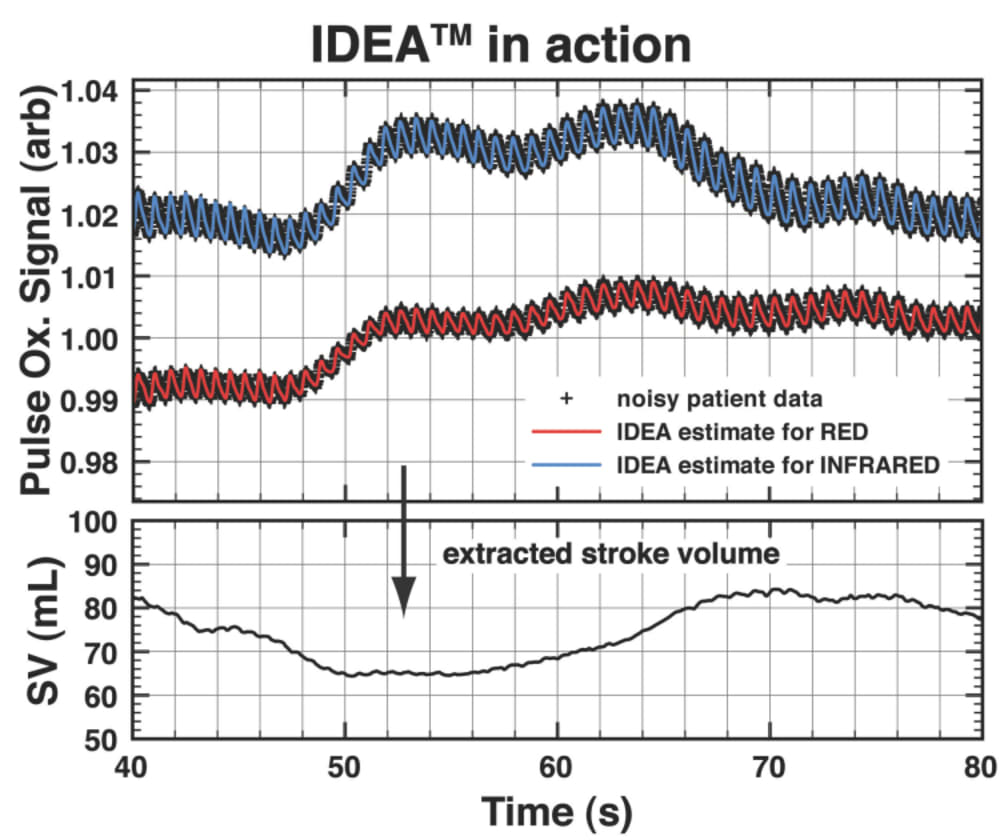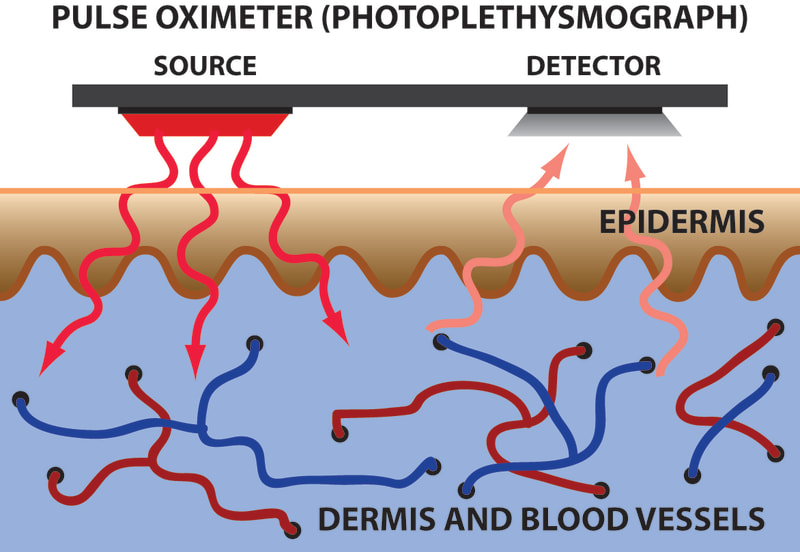
The left-ventricular stroke volume (or stroke volume, for short) is how much volume of blood the heart pumps with each heart beat. Stroke volume is important because it is a direct indicator of heart efficiency and health. Today, stroke volume can only be measured invasively using a Swan-Ganz catheter or via ultrasound echocardiography. Catheter is insertion risky and limited to special surgeries. Echocardiography is noninvasive but cumbersome, highly subjective and therefore unreliable. As a result, a noninvasive, convenient and reliable measurement of stroke volume is considered to be the “Holy Grail” of hemodynamic assessment. We have attained this goal by enhancing pulse oximetry.
Pulse oximetry measures light absorption by blood as it pulses with each heart beat. In conventional pulse oximetry, the height of the pulses are converted to blood oxygenation. As it turns out, these light pulses contain far more than oxygenation levels: it also carries information about the patient’s cardiovascular system, including stroke volume and cardiac output. However, the information is embedded in the detailed shape of the pulse and the way it changes over time, so extracting it is difficult. Conventional digital signal processing methods are not up to the task because those merely focus on particular features of the pulse. Instead, this problem requires software capable of analyzing the entire pulse dynamics. To this end, we have created the Intelligent Data Extraction Algorithm or IDEA™. IDEA™ is an elegant confluence of recent advances in probabilistic inference, unsupervised machine learning and quantitative medicine. As such, it represents a paradigm shift in data processing, one that is capable of “understanding” noisy pulse signals and interpreting them in a physiological context.
IDEA™ technology enhances existing pulse oximeter hardware with a noninvasive, continuous and realtime stroke volume measurement. This solves several vital clinical needs that cannot be met with current technology. During anesthesia, surgery and recovery, our enhanced pulse oximeter can track the patient’s hemodynamic evolution throughout, warning against possible adverse reactions or “silent hemorrhages” that do not show up in any standard monitoring equipment. In the neonatal ward, it can monitor babies born with congenital heart disease or poor blood flow. At home, it can be used to monitor patients with chronic heart conditions (the top killer in the US) and warn doctors about developing acute problems such as arrhythmias and heart attacks. In the battlefield and disaster areas, our device can dramatically improve the speed and accuracy of triage to save the lives of injured soldiers and victims. Many other medical practices necessitate the use of noninvasive and continuous stroke volume monitoring to expand the amount of vital information available at the patient care area and eliminate the need for risky invasive procedures. IDEA™ will be sold as a software library that can be used to enhance existing hardware, therefore minimizing capital outlay by the customer while lowering acceptance and learning barriers.
-
Awards
-
 2010 Medical Category Winner
2010 Medical Category Winner
Like this entry?
-
About the Entrant
- Name:Rodrigo Teixeira
- Type of entry:teamTeam members:Rodrigo E. Teixeira, Alton J. Reich, Stephen F. Malin
- Software used for this entry:LabView, MatLab
- Patent status:pending
















